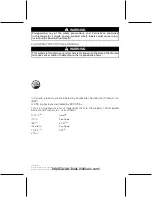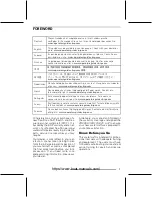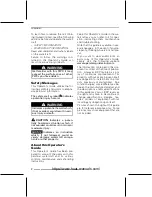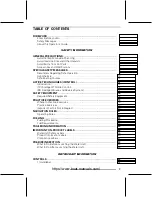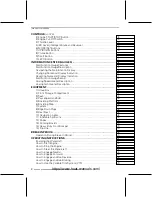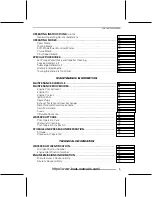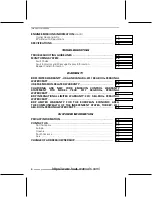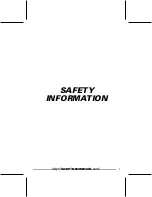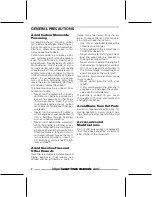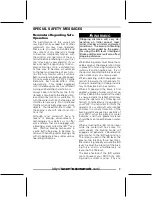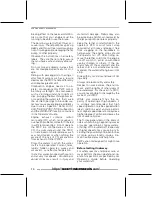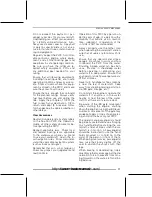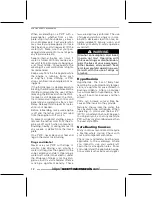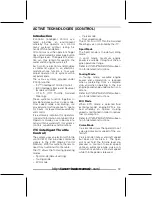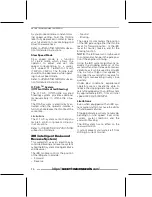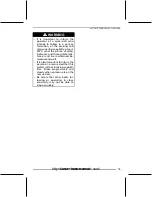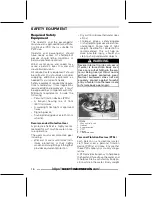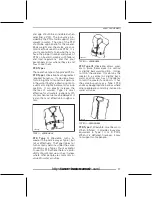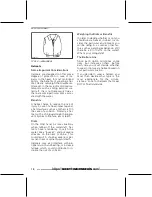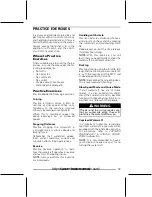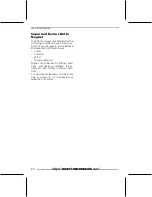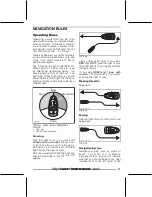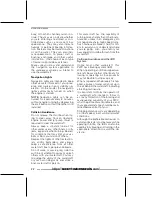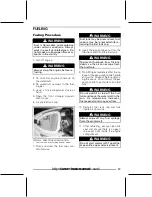
GENERAL PRECAUTIONS
Avoid Carbon Monoxide
Poisoning
All engine exhaust contains carbon
monoxide, a deadly gas. Breathing car-
bon monoxide can cause headaches,
dizziness, drowsiness, nausea, confu-
sion and eventually death.
Carbon monoxide is a colorless, odor-
less, tasteless gas that may be present
even if you do not see or smell any en-
gine exhaust. Deadly levels of carbon
monoxide can collect rapidly, and you
can quickly be overcome and unable
to save yourself. Also, deadly levels of
carbon monoxide can linger for hours
or days in enclosed or poorly ventilated
areas. If you experience any symp-
toms of carbon monoxide poisoning,
leave the area immediately, get fresh
air and seek medical treatment.
To prevent serious injury or death from
carbon monoxide:
– Never run the watercraft in poorly
ventilated or partially enclosed ar-
eas such as seawalls or other boats
in close proximity. Even if you try
to ventilate engine exhaust, carbon
monoxide can rapidly reach danger-
ous levels.
– Never run the watercraft outdoors
where engine exhaust can be drawn
into a building through openings
such as windows and doors.
– Never stand behind the watercraft
while the engine is running. A per-
son standing behind a running en-
gine may inhale high concentrations
of exhaust fumes. Inhalation of con-
centrated exhaust fumes that con-
tain carbon monoxide can result in
CO poisoning, serious health prob-
lems and death.
Avoid Gasoline Fires and
Other Hazards
Gasoline is extremely flammable and
highly explosive.
Fuel vapors can
spread and be ignited by a spark or
flame many feet away from the en-
gine. To reduce the risk of fire or explo-
sion, follow these instructions:
– Use only an approved red gasoline
container to store fuel.
– Strictly adhere to the instructions in
FUELING
subsection.
– Never start watercraft if gasoline or
gasoline vapor odors is present in
the engine compartment.
– Never start or operate the engine if
the fuel cap is not properly secured.
– Do not carry gasoline containers in
the front storage compartment or
anywhere else on the watercraft.
Gasoline is poisonous and can cause
injury or death.
– Never siphon gasoline with your
mouth.
– If you swallow gasoline, get any in
your eyes, or inhale gasoline vapors,
see a doctor immediately.
If gasoline is spilled on you, wash
thoroughly with soap and water and
change your clothes.
Avoid Burns from Hot Parts
Certain components may become hot
during operation. Avoid contact dur-
ing and shortly after operation to avoid
burns.
Accessories and
Modifications
Do not add accessories or equipment
that may adversely affect visibility or
alter control of the watercraft.
8
________
SAFETY INFORMATION
________
https://www.boat-manuals.com/
Summary of Contents for SEA-DOO Search and Rescue Series 2017
Page 9: ...SAFETY INFORMATION ________ SAFETY INFORMATION ________ 7 https www boat manuals com...
Page 39: ...WATERCRAFT INFORMATION _______________ 37 https www boat manuals com...
Page 89: ...MAINTENANCE INFORMATION _______________ 87 https www boat manuals com...
Page 115: ...TECHNICAL INFORMATION ______________ 113 https www boat manuals com...
Page 120: ...SPECIFICATIONS This page is intentionally blank 118 ______________ https www boat manuals com...
Page 121: ...TROUBLESHOOTING ______________ 119 https www boat manuals com...
Page 131: ...WARRANTY ______________ 129 https www boat manuals com...
Page 153: ...CUSTOMER INFORMATION ______________ 151 https www boat manuals com...
Page 157: ...CHANGE OF ADDRESS OWNERSHIP ______________ 155 https www boat manuals com...
Page 159: ...CHANGE OF ADDRESS OWNERSHIP NOTES ______________ 157 https www boat manuals com...
Page 160: ...CHANGE OF ADDRESS OWNERSHIP NOTES 158 ______________ https www boat manuals com...
Page 161: ...CHANGE OF ADDRESS OWNERSHIP NOTES ______________ 159 https www boat manuals com...
Page 162: ...CHANGE OF ADDRESS OWNERSHIP NOTES 160 ______________ https www boat manuals com...
Page 163: ...https www boat manuals com...


